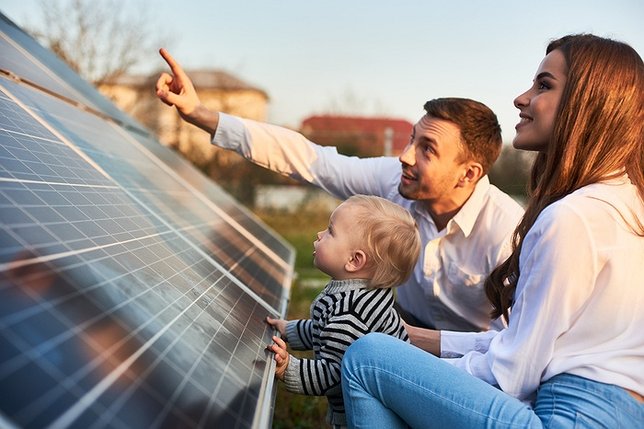With Earth Day around the corner and the U.S. having experienced $165 billion in damage from weather and climate disasters during 2022, the personal-finance website WalletHub today released its report on 2023’s Greenest States, as well as expert commentary.
In order to showcase the states doing right by Mother Earth, WalletHub compared the 50 states in terms of 25 key metrics that speak to the current health of the environment and residents’ environmental-friendliness. The data set ranges from green buildings per capita to the share of energy consumption from renewable resources.
Greenness of New York (1=Greenest, 25=Avg.):
- 11th – Air Quality
- 5th – Soil Quality
- 14th – Water Quality
- 13th – LEED-Certified Buildings per Capita
- 19th – % of Renewable Energy Consumption
- 3rd – Energy Consumption per Capita
- 1st – Gasoline Consumption (in Gallons) per Capita
For the full report, please visit:
https://wallethub.com/edu/greenest-states/11987
Expert Commentary
What policies can state and local authorities pursue to make their communities more environmentally friendly?
“Foster high-density urban development – moving city residents toward walking, biking, mass transit, and smaller (apartment) dwellings. American urban zones are the most sprawled (low-density) and auto-dependent in the world. As a result, the U.S. automotive fleet is responsible for roughly half of all CO2 automobile-related emissions. Additionally, the relatively large abodes (single-family homes) characteristic of low-density urban development creates massive (profligate) energy demand – global warming emissions. Comparatively large homes require excess energy to heat/cool and to power the excess appliances (lighting, electronic devices) that fill such dwellings.”
George A. Gonzalez – Professor, University of Miami
“To be environmentally friendly, states and localities must decarbonize. Therefore, state and local authorities should focus on what causes carbon emissions. So, they can support the generation of wind, solar, and geothermal energy to address electricity emissions. They can require all new buildings to be all-electric, provide incentives for existing buildings to electrify and require their regulator to determine how to quickly shut down the natural gas distribution system to address building emissions. They can focus on density near public transit, walkability/pedestrian safety, providing incentives for electric vehicles, and extending public transportation to address emissions from the transportation sector. Many more actions states and localities could take, but these are a few.”
Heather Payne – Associate Professor, Seton Hall University School of Law
Is there an inherent tradeoff between protecting the environment and promoting economic growth?
“Protecting the environment is not the antithesis of economic growth. Our air is much cleaner and most of our waterways are less polluted than they were 50 years back. We have adopted a large number of policies to protect our environment in this duration without any adverse impact on our economic growth. In fact, I would say that environmental protection technologies would be a driver for economic growth soon.”
Rajesh Sharma, Ph.D. – Associate Professor, Director of Engineering Technology, Arkansas State University
“I do not believe there is an inherent tradeoff between protecting the environment and promoting economic growth. Sure – in the short run you can often make money and produce short-term economic growth by destroying the environment. But in the longer term, I think you are usually better off protecting the environment and investing in more sustainable innovation and growth. Buying things that are ‘greener’ and that are produced more responsibly might cost a little bit more, but means that we will spend less on healthcare in the long run. From a big-picture perspective – consuming renewable energy might cost a little more (although renewable energy is now actually cheaper than fossil fuel energy). But it avoids particulate matter and toxic air pollutants that make us sick. It does not involve destroying mountain streams in the pursuit of coal and poisoning drinking water. Beyond renewable energy, investing in products and processes that are cleaner and more sustainable tends to produce higher value-added products. Sure – we might be paying a little bit more for an energy-efficient building or home, but the operating costs will be lower; people who inhabit those buildings will be healthier and happier, and more productive. Too often we get wrapped up in the initial sticker price or in some aggregate figure like GDP growth without considering the total costs of ownership or broader concepts like quality of life.”
Daniel Matisoff – Associate Professor; Director of MSEEM Program, Georgia Institute of Technology
What is the single most impactful thing an individual can do to reduce their effect on the environment?
“In terms of individual actions, they would match what states and cities should be doing – think about how you can reduce the carbon footprint in your own life: electrify household uses (heat, hot water, cooking, clothes drying, vehicles) when possible, think about consumption and try to reduce the purchase of single-use or low-quality items. It is also important for individuals to recognize that decarbonization and the electrification of everything will be cheaper systematically than what we have today, and even more so if we take all the safety and health impacts into account.”
Heather Payne – Associate Professor, Seton Hall University School of Law
“This is a great question one I get often. Participate: go to local and other government meetings on development projects. Comment there. Write to local news outlets and blogs. Write to your representatives and ask others to. Be persistent and polite but clear and strong about your involvement and message. If you are facing seriously negative responses, consider litigation.”
Joseph F. C. DiMento – Distinguished Professor of Law, University of California, Irvine School of Law










